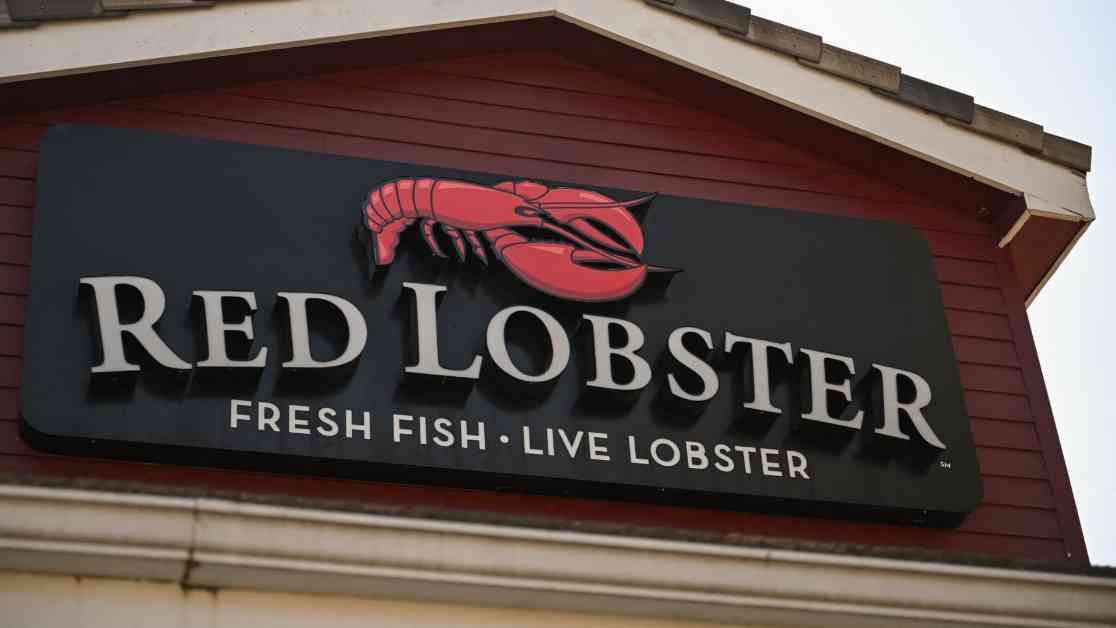In a year marked by economic challenges and shifting consumer behaviors, the restaurant industry has been hit hard by the effects of the ongoing pandemic. With rising costs, labor shortages, and a decrease in consumer spending, many restaurant chains have found themselves in financial distress. This has led to a notable increase in bankruptcy filings among some of the most well-known eateries in the country.
Impact of the Pandemic on the Restaurant Industry
The Covid-19 pandemic has brought unprecedented challenges to the restaurant industry, forcing many establishments to adapt to new ways of operating in order to survive. With dining restrictions, capacity limits, and consumer hesitancy to dine out, restaurants have faced significant revenue losses. This has been further exacerbated by rising costs of goods, labor, and rent, making it difficult for many establishments to stay afloat.
One of the significant impacts of the pandemic on the restaurant industry has been the shift in consumer behavior. With more people opting for takeout and delivery options, traditional sit-down restaurants have had to rethink their business models. This change in consumer preferences has put additional pressure on restaurants to innovate and find new ways to attract customers.
Top 10 Restaurant Chains that Filed for Bankruptcy in 2021
1. Red Lobster – Known for its seafood offerings, Red Lobster filed for bankruptcy protection in May. The company cited a challenging macroeconomic environment, underperforming restaurant footprint, failed strategic initiatives, and increased competition as factors contributing to its insolvency. The investment group buying Red Lobster has appointed Damola Adamolekun as the company’s next leader in hopes of successfully exiting Chapter 11.
2. Roti – Mediterranean fast-casual chain Roti filed for Chapter 11 bankruptcy protection in August. The company, which operates 22 locations, struggled during the pandemic due to its concentration in downtown business districts. Despite raising $58 million as of June, the recent downturn in consumer spending led to insolvency. Roti is working with landlords and suppliers to keep its locations open while searching for a new buyer or investors.
3. Buca di Beppo – Italian American chain Buca di Beppo declared bankruptcy in August, keeping 44 of its locations open while undergoing restructuring. The company attributed its financial difficulties to rising costs and labor challenges. Founded in 1993 and sold to Planet Hollywood in 2008, Buca di Beppo aims to navigate its financial challenges and emerge stronger.
4. World of Beer – Tavern chain World of Beer filed for bankruptcy protection in August, citing high interest rates, inflation, and slow return to pre-pandemic dining habits as reasons for its financial struggles. The company plans to restructure and end leases at underperforming locations to ensure its long-term viability.
5. Rubio’s – Known for its fish tacos, fast-casual chain Rubio’s Restaurants filed for Chapter 11 bankruptcy protection in June. With 86 locations across California, Nevada, and Arizona, Rubio’s faced challenges from rising costs, shift to hybrid work, and minimum wage hikes in California. The company agreed to a sale to an affiliate of TREW Capital in August after closing 48 underperforming restaurants in California.
6. Melt Bar & Grilled – Cleveland-based chain Melt Bar & Grilled filed for Chapter 11 in June due to struggles in paying vendors and landlords. Known for its grilled cheese sandwiches and craft beer offerings, the company aims to save the business through bankruptcy and restructuring efforts.
7. Kuma’s Corner – Parent company Kuma Holdings of the midwestern burger chain Kuma’s Corner filed for bankruptcy protection in June. With a unique metal- and punk-themed menu, Kuma’s Corner opened its first location in 2005 and has faced financial challenges in recent years.
8. Tijuana Flats – In April, Tex-Mex chain Tijuana Flats announced new ownership, a Chapter 11 bankruptcy filing, and closure of 11 restaurants. AUA Private Equity Partners sold the chain to Flatheads LLC as part of its restructuring efforts to navigate financial difficulties.
9. Sticky’s Finger Joint – Chicken-tender chain Sticky’s Finger Joint declared bankruptcy in April due to rising commodity costs, pandemic aftermath, and legal expenses. The company, founded in 2012, faced financial challenges and sought restructuring to ensure its future sustainability.
10. Boxer Ramen – The Portland, Oregon ramen chain Boxer Ramen filed for Chapter 11 bankruptcy protection in February and abruptly closed all four of its locations in late April. Founded more than a decade ago, Boxer Ramen’s closure highlights the challenges faced by many restaurants in the current economic climate.
Future Outlook for the Restaurant Industry
As the restaurant industry continues to navigate the challenges brought on by the pandemic, it is essential for establishments to adapt and innovate to survive. With changing consumer preferences, rising costs, and ongoing economic uncertainty, restaurants must be proactive in addressing financial challenges and finding new ways to attract customers.
While bankruptcy filings among restaurant chains have been on the rise in 2021, it is important to note that not all establishments are facing the same fate. Many restaurants have successfully pivoted their business models, embraced technology, and implemented new strategies to stay competitive in the current landscape.
As the industry looks towards recovery, collaboration between restaurants, industry stakeholders, and policymakers will be crucial in supporting the long-term sustainability of the restaurant sector. By working together to address challenges, innovate, and adapt to changing consumer behaviors, restaurants can emerge stronger from the current economic downturn and thrive in the post-pandemic world.






















